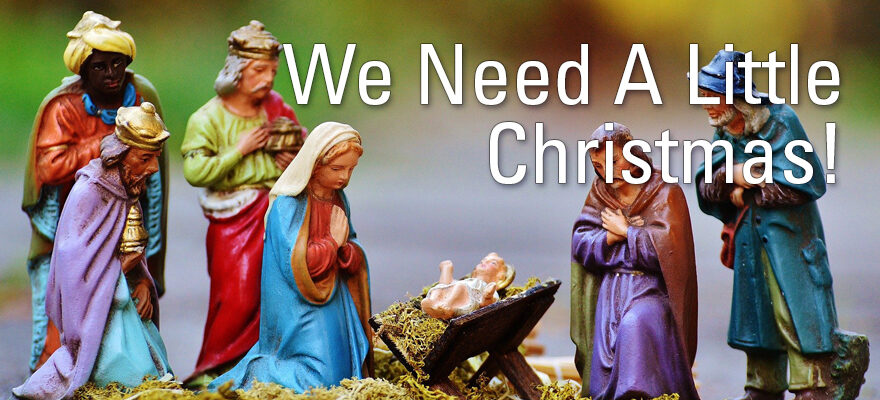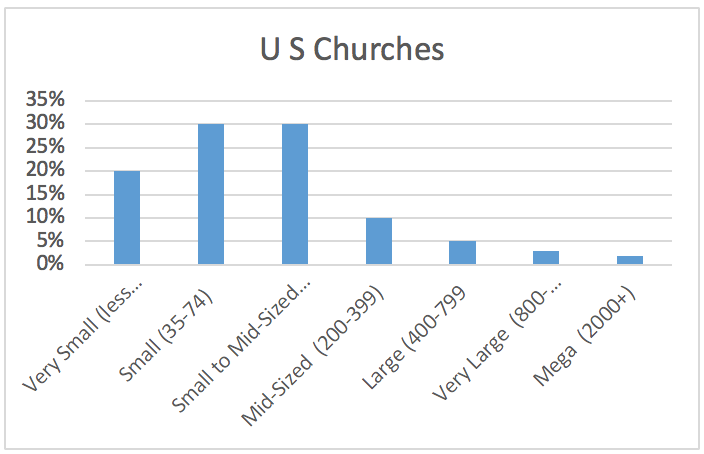by Franklin Dumond, Director of Congregational Ministries
Way back in 1966, Jerry Herman released the words to a now-classic Christmas tune. It was first performed in the musical “Mame” by
Angela Lansbury and was later made into a movie featuring Lucille Ball (1974). Since then the song has been recorded by dozens of major artists who have taken up the clarion call that we need a little Christmas.
The musical was set in 1929 just after Mame lost her fortune in the Wall Street crash of that year. In the face of this bad news, Mame insists we need a little Christmas. When I looked back to the lyrics I noticed a couple of things included in some of the lines that have been updated across the years. For example, in the original Thanksgiving is still a week away and everyone back then apparently knew that a spinet was a downsized piano.
Now that 2020 is finally coming to a close we certainly need a little Christmas—right this very minute!
As paternal grandparents, we share grandkids with the maternal grandparents. This means that every year we revisit the schedule of who visits with whom on what day. This often means that Christmas for us will be on Christmas Eve or even an earlier day depending on travel schedules and the other complications of life in an imperfect world. Christmas then is not just a date on the calendar but an event to be celebrated.
If Mame needed a little Christmas in 1929 with the stock market crash, surely we need a lot of Christmas with the Pandemic of 2020! The lyrics say it so well:
For I’ve grown a little leaner,
Grown a little colder,
Grown a little sadder,
Grown a little older;
And I need a little angel,
Sitting on my shoulder,
I need a little Christmas now.
While many Christmas plans for local churches will already be set here’s a couple of observations that can either help speed up or refine those plans.
First, with social distance measures still in place and with hot spots of Covid infection, everyone must ask the question about Christmas that has been asked about every other ministry this year. “Can we safely, responsibly do what we have always done to celebrate Christmas?”
Making a list and checking it twice must become a planning tool for the church calendar just as it is for the ‘visitor’ who is coming to town on Christmas Eve. What have we always done? Who has always done it? Is it appropriate this year? Do we need to suspend some activity for the year or do we need to dispense with traditions that are no longer meaningful or engaging?
Second, we need to give some attention to some important plans. We need a plan for our theme and we need a plan for our communication.
A plan for our theme needs to look both at sermon titles and worship themes as well as other ways we communicate the Christmas message. In this troubled year, we particularly need to communicate a message of hope. Since folks are longing for the good old days we also need to be nostalgic without being trapped in the traditional. One church consultant defined nostalgia as what was fun that brings back pleasant memories. Traditional, on the other hand, often harken back to methods or styles that are now archaic and thus not as meaningful as they once were.
For example, the traditional event of caroling where a group would travel around the neighborhood singing Christmas carols to friends and neighbors was once a popular activity. Back then most everyone knew the words and tunes to the 6-8 most popular carols because that was the sum total of the Christmas music included in church hymnals. Now with the explosion of Christmas titles and with the absence of printed music, it’s hard to do that once-upon-a-time-fun-event of caroling.
So an important question to ask is: “What plan do we have for Christmas content?” Sometimes this can easily be driven by a Christmas graphic that captures the message in a timely way. However it is developed, it is very, very important that this year’s content has a healthy portion of HOPE because we need a little Christmas now.
We also need a plan for our communication. How and when will we share our content? Weekly worship is obvious but are there other ways we need to communicate our Hope-Filled Message of Christmas? Social media posts, newsletters, cards, banners, video greetings…and other communication avenues available to us need to be used.
Communication can be driven by the graphic or logo used to promote the Christmas message. This simple act of branding—using the logo with everything we do—links our efforts into a unified expression. This means selecting a graphic that is easily adapted to the video projector and the photocopier is very important.
Communication also needs to be customized to various constituencies and age groups.
Only rarely does a church over-communicate. Most often churches under-communicate.
One piece of advice that seems unusual may be beneficial this year. After being stuck at home for months of shut down, many people do not react well to the “home” theme so often part of Christmas. For the home for Christmas may not be a time of reunion and may instead bring up too many negative images of the pandemic and its lockdowns.
Developing the content and a plan to communicate it echoes the work of the angels that first Christmas when they announced to the shepherds, “Unto you is born this day a Savior which is Christ the Lord.”
Ready for the next step? Then download our e-book “2020 Christmas Planning Pack”. The 2020 Christmas Planning Pack is a Church Talk Publication designed to help stateside General Baptist leaders cope with the “new normal”.



